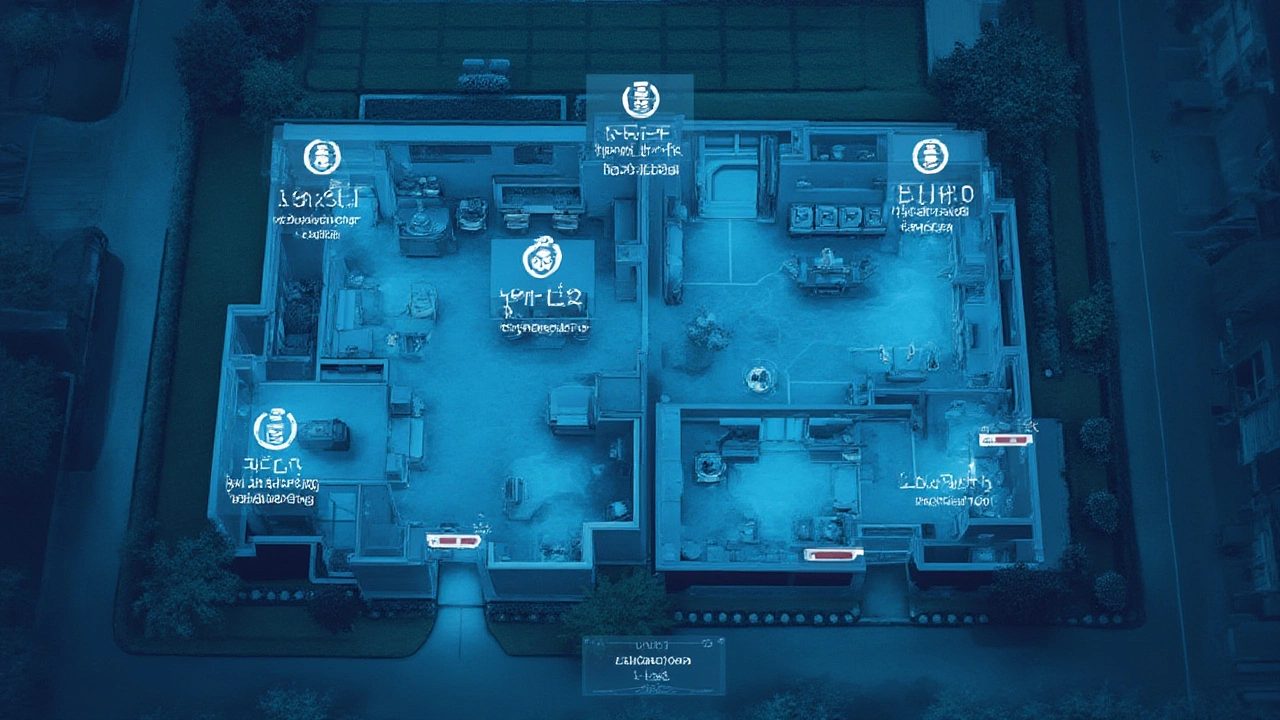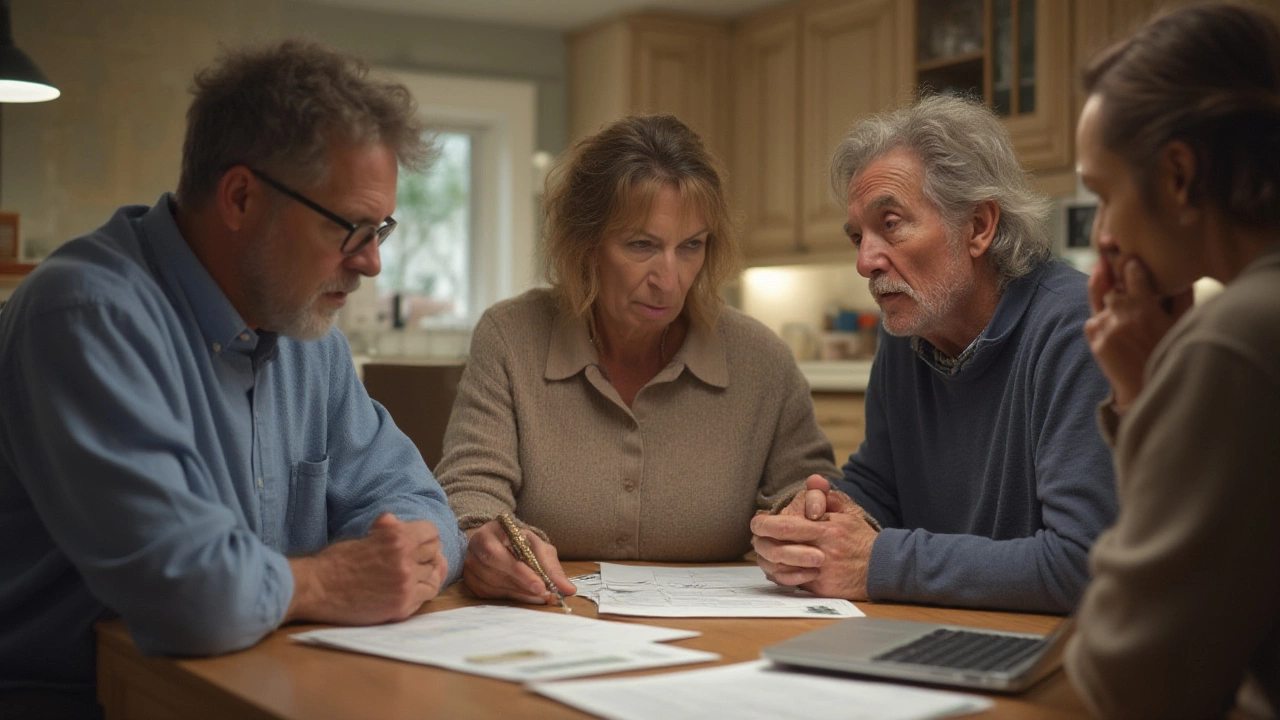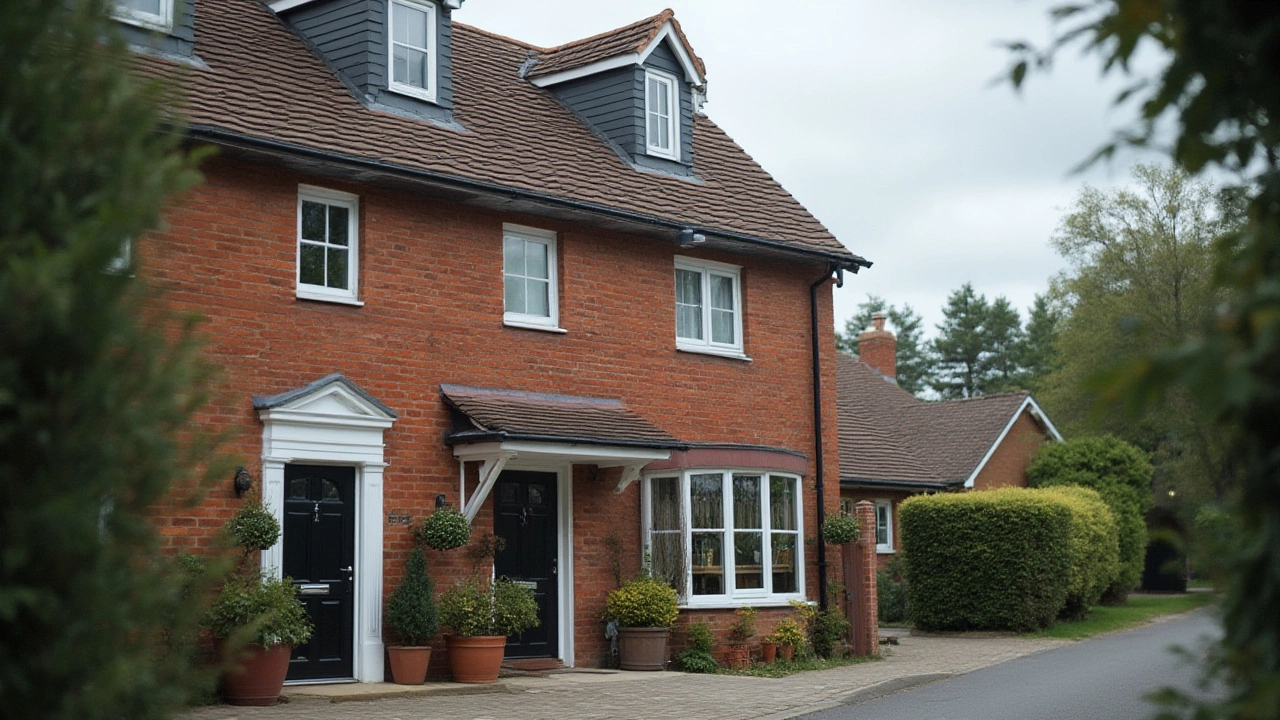Snap judgements can backfire, especially when it comes to mounting a security camera around your home. Most folks are thinking, “Stick it up, catch the crooks!” But what happens if your camera’s pointed the wrong way? Not only can it get you tangled up with the law, but you might even be breaking trust with people closest to you—family, friends, and the neighbors over the fence. Let’s look at what can go seriously wrong when you put cameras in areas you really shouldn’t, and why it matters more than you think.
The Hidden Risks of Wrong Camera Placement
It’s tempting to believe more cameras equal more safety, but that only holds true if you’re smart about where you set them up. The privacy nightmare starts brewing the moment your camera lens strays into places it has no business being. One big no-go: anywhere people expect total privacy. Think bathrooms, toilets, changing rooms, or bedrooms—these spaces should never be monitored. Even if you install cameras on your own property, these places are strictly off-limits under Australian privacy law, and it’s dead easy to slip up here. Imagine someone discovers a hidden camera in a personal space—scandal, legal mess, the works. It’s not just creepy, it can lead to fines and, in the worst cases, criminal charges.
Beyond those obvious spots, lots of folks underestimate just how strict the rules are at play. Let’s say you’re thinking about putting a camera in your backyard, angled to cover a wide view. If part of your neighbor’s yard or house ends up in the footage, you could land yourself a legal headache. Neighbours have a reasonable expectation not to be watched while they sip tea or hang their laundry. If someone complains, you might be forced to take it down or face official complaints under South Australia’s laws. The Office of the Australian Information Commissioner will tell you—your security doesn’t override someone else’s privacy.
There’s another layer: surveillance inside your home where guests wouldn’t expect it. You might want to keep tabs on an entryway, but if that camera also covers the inside of a bathroom door or points through to a bedroom, that’s dangerous territory. Friends, tradies, even your kid’s sleepover guests have the right not to be spied upon. Even if the goal is peace of mind, people get uncomfortable fast, and it’s less about legal risk and more about trust. Word gets out, and suddenly nobody wants to visit.
Rubbing up against privacy isn’t just a legal thing. Think about any smart system you use—Google Nest, Ring, Arlo. Those companies make it clear: don’t put cameras in private places. Their terms of use spell out serious consequences, including suspension of accounts if privacy is violated. Abuse a cloud camera and you might lose access altogether, often with no refund. It’s not just a “maybe”—this stuff gets enforced.
If you want to see how fast things can escalate, just check out recent news stories. There was that Southport landlord fined $1,500 after sticking cameras inside a tenant’s rental. Tens of Airbnb hosts worldwide have been banned for similar stunts, with lawsuits following. In each of those cases, cameras in private areas weren’t just “inappropriate”—they ended up costing real money and igniting public outrage on social media. The fallout can burn for years.
Installing cameras to get the best security means dodging big privacy potholes. Getting it wrong won’t just make you unpopular; you might break the law, lose access to your expensive gear, and shatter trust IRL. So before hooking up any camera, picture yourself on the other side of the lens. Would you want your private moments recorded there? If not, don’t do it.

Understanding Australian Surveillance Laws and Shared Spaces
Let’s be blunt: laws around security camera placement aren’t just vague best-practices—they’re the real deal here in Australia, especially in South Australia. You might be surprised by what’s actually illegal even inside your own home, let alone outside. The devices are everywhere now, but the rules didn’t just catch up—they went way out ahead. You’re expected to stay informed, and “I didn’t know” won’t cut you much slack with authorities.
In South Australia, surveillance is mostly covered by the Surveillance Devices Act 2016. That act is very clear: recording private activities without consent is a breach, whether you’re a business, landlord, or private resident. Private activity refers to anything happening on private property where a person expects privacy, so that’s toilets, showers, bedrooms, or any space shut off to the public eye. A camera covering a bedroom—no matter the reason—is almost never reasonable. And bathrooms are always out of bounds, even if you claim it’s just to spot water leaks.
It gets stickier in “shared” spaces—think apartment blocks, car parks, or common stairwells. As the Victoria Law Foundation points out, common areas are considered semi-private, and require either a body corporate’s written permission or the direct consent of everyone who regularly uses that space. A building manager can’t just slap up cameras pointing at your front door without checking first. Nosy landlords with secret cameras in a share-house common area? That’s almost always grounds for legal action if tenants don’t know and agree in writing.
There’s more: when it comes to recording audio, South Australia is even tougher. You actually break the law the second your camera records someone’s conversation without their knowledge—even if you’re the one with the camera. Most modern brands like Eufy and Ring let you turn audio recording off, and in many cases, it’s best to do just that. There are plenty of YouTube breakdowns of how these “all-in-one” devices accidentally tripped up owners with eavesdropping charges, simply because a setting was left on by default.
Beyond criminal penalties, you’re also looking at civil liability. That means someone who feels you invaded their privacy can sue—not just for damages, but sometimes for emotional distress, too. In 2023, an Adelaide couple ended up in mediation after a neighbour’s camera covered their backyard entertaining area. The cameras had to go, the neighbours don’t speak, and the only ones happy were the lawyers.
Adelaide’s local councils are also getting involved. If your security system causes a nuisance—picking up footage outside your property, even in public spaces—you can be fined for causing “public annoyance.” Don’t believe your camera only seeing the street protects you. If it’s regularly capturing people’s faces or property in detail, you could be made to take it down, or at least to install privacy masks to blur out anything outside your boundary fence or perimeter. Some cameras now offer privacy zones you can set in the app—use them.
No matter where you live, it comes down to two major rules: 1) Don’t point cameras where people have a right to privacy, and 2) Always check for consent—in writing, if possible—when you share ownership or access. Missing either of these can cost you big time. The people most at risk are landlords, body corporates, and business owners, but even regular homeowners are tripping up simply because they didn’t ask or assumed they “had the right.”
The good news? Companies are actually making compliance easier. Many security brands now prompt you to review placement guides during setup, just to keep you out of trouble. But at the end of the day, the law can change fast. Adelaide’s city council regularly updates neighbourhood guidelines and keeps a keen eye on tech upgrades, so keep an ear out for news. If you’re feeling unsure, quick legal advice is worth more than a lifetime of apologising.

Smart Security Without Crossing the Line
Okay, so where are you supposed to put your cameras if so many places are off the cards? Turns out you can protect your family and your home without turning into Big Brother or risking a legal run-in. It’s all about knowing which spots get you the best bang for your buck—and don’t spark complaints or lawsuits.
Start with exterior doors and entryways. It’s your property’s crossing point, so you have the right (and responsibility) to keep an eye here. Aim cameras downwards and limit the field of view—don’t let the video scoop up the neighbour’s driveway or inside their garage. If you have gates, put a camera above them, angled just over the threshold. Most burglars aren’t coming through walls—they’ll try the front, side, or back doors, and that’s where you want your strongest lens.
If you’re protecting a garage or shed, position cameras up high where they see movement near the doors, not deep inside the building. Avoid capturing inside your neighbour’s yard; set privacy masks if your device allows, or trim branches to keep angles clear. Video doorbells have gained popularity for a reason—they’re legal, practical, and only activate when someone approaches your door. They’re perfect for deliveries, suspicious activity, and monitoring who’s coming and going from your place—not from next door.
Lighting is key for useful footage. Cameras should be placed where outside lights can help the lens catch clear details—faces, plates, and actions. Mount cameras under eaves to protect them from rain or the blazing Adelaide sun, and to keep them slightly hidden so they’re not an eyesore. Every camera should have a purpose that makes sense: “What am I trying to protect, and why does this angle matter?”
Indoors, stick to shared spaces like entry halls or inside a home office—never bedrooms or bathrooms. Living rooms can work, but remember to get consent if you share your place with anyone else. A good tip: post a sign or notify guests that cameras are operating, even at home. You’re not required by law to announce it, but doing so builds trust—and heads off awkward conversations later.
If you’ve got kids, respect their privacy. Don’t put cameras directly in kids’ bedrooms. Baby monitors are the one exception, but stop using them as soon as kids get old enough to dress themselves or want time alone. The same logic goes for monitoring helpers in your home—cleaners, tradies, babysitters. Don’t aim cameras where people undress or have private time. You can check comings and goings with a hallway cam instead.
Regularly review where your cameras are pointed. If a lens gets nudged and starts covering something it shouldn’t, fix it right away. Most smart cameras let you check the feed on your phone at any time, so do a monthly review. Recordings should be stored securely, encrypted if possible, and erased after a set time. Don’t keep months or years of footage if you don’t need it—it’s a honey pot for hackers if your cloud account is ever breached.
Avoid “invisible” cameras. Hiding monitoring devices is risky and can easily cross the line. Visible cameras act as a deterrent, which is part of their value. Let people know they’re being recorded, whether you’re at home or managing a rental property. If in doubt, double-check the Surveillance Devices Act 2016—there’s a free PDF online—and talk to your insurer for extra tips compatible with your policy.
If you’re in a body corporate building, always ask permission before installing anything. The decision often needs a committee vote. Get everything in writing. For landlords, informing tenants in advance is a non-negotiable unless you want to be one headline away from trouble. Even just letting people know you have outdoor cams goes a long way to smoothing relationships, especially in tightly packed Adelaide suburbs where everyone’s garden borders on someone else’s living room.
Just remember: smart security means smart boundaries. Use cameras to protect – not spy. Treat everyone’s privacy the way you want yours treated. When in doubt, consult someone who knows privacy law, and err on the side of caution. This way, you get peace of mind minus the drama, fines, and angry door knocks from next door. Stay sharp, keep it legal, and your home—and your reputation—will be safe.

